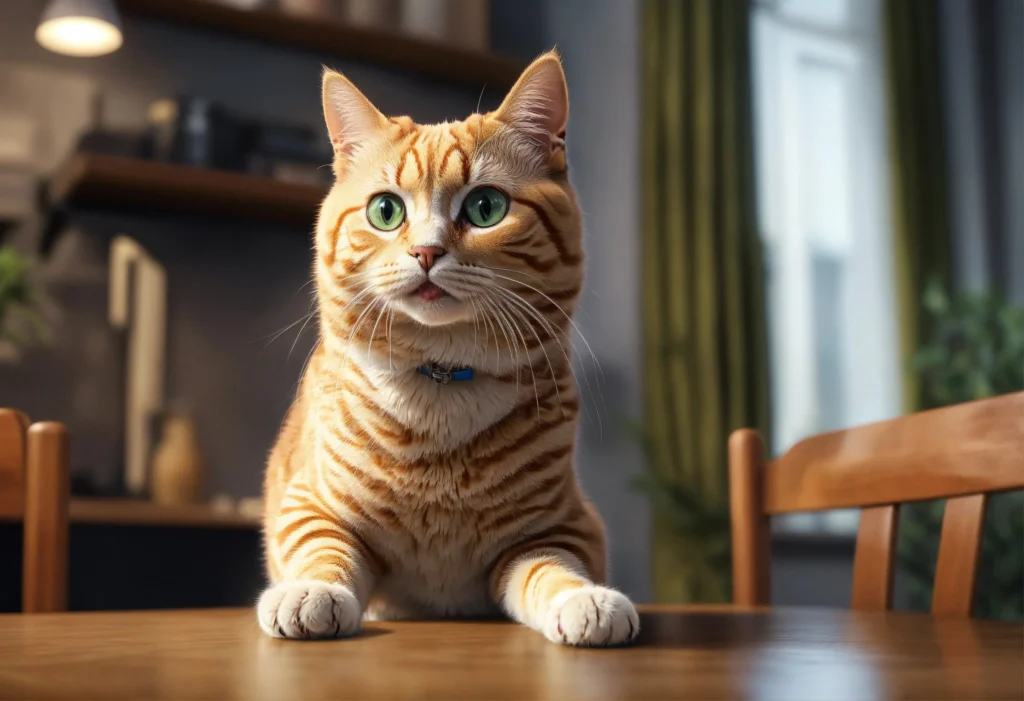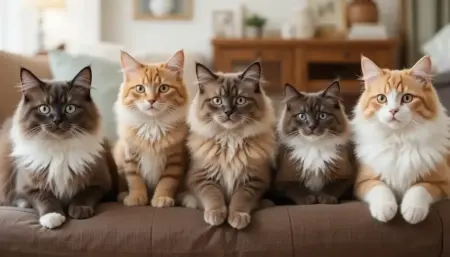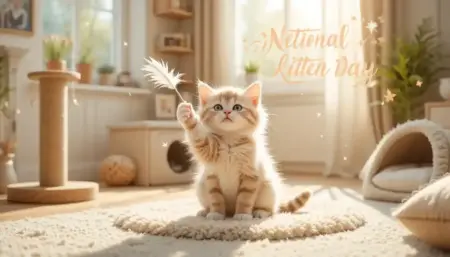Orange cat breeds are felines with a distinct golden‑to‑red coat, ranging from the affectionate American Shorthair to the majestic Maine Coon. Their warm coloring, friendly personalities, and easy‑going nature make them popular house pets worldwide.
In this guide, you’ll learn each breed’s history, temperament, health needs, and how to pick the perfect orange companion for your home.
Whether you’re a seasoned cat lover or new to feline companionship, the following sections will help you understand each orange cat breed’s unique charm and provide practical care advice.
What Makes Orange Cat Breeds Unique?
Orange cat breeds stand out not only for their striking coats but also for a blend of personality traits and genetic quirks that set them apart from other felines.
Understanding these distinguishing features helps owners appreciate why orange cats often capture the hearts of families worldwide.
- Eye‑catching coloration – Shades range from pale cream to deep ginger, often with bold tabby patterns.
- Personality pattern – Many orange cats are noted for being sociable, confident, and playful.
- Genetic link – The orange coat is tied to an X‑linked gene, which influences sex distribution (more males).
- Popularity factor – Their bright hue and “friendly” reputation make them frequent stars in memes, movies, and social media.
These traits combine to create a cat that is both visually striking and emotionally engaging, making orange cat breeds a top choice for many households.
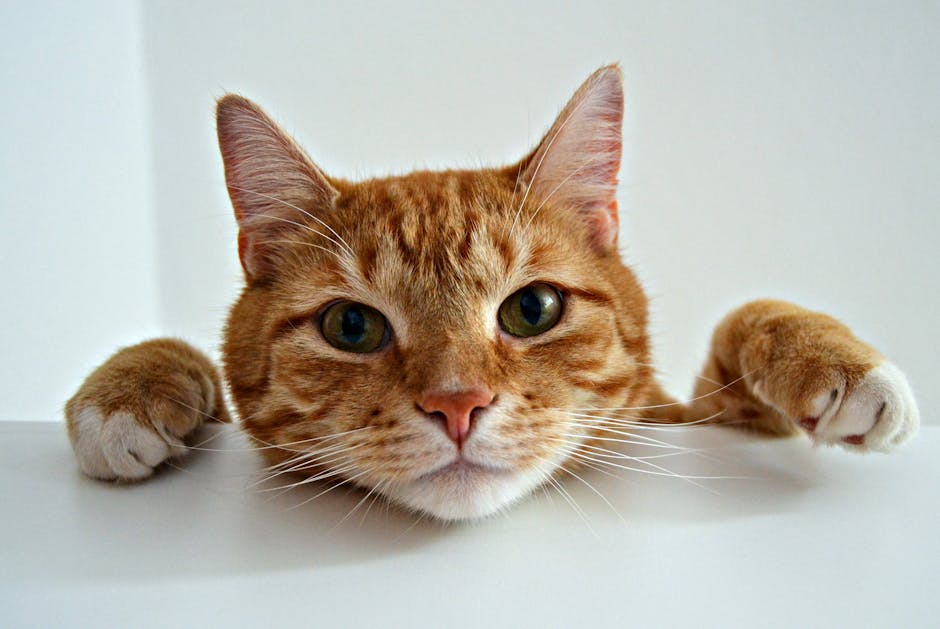
Popular Orange Cat Breeds and Their Traits
Below is an overview of the most beloved orange cat breeds, each offering a distinctive blend of size, temperament, and grooming needs.
This guide highlights what makes each breed special, helping you match a feline companion to your lifestyle.
Maine Coon – The Gentle Giant
- Size: One of the largest domestic cats; males often exceed 18 lb.
- Coat: Long, silky, water‑repellent fur with a classic “fur‑ruff” around the neck.
- Temperament: Loyal, gentle, and dog‑like; enjoys interactive play and follows owners around.
- Grooming: Weekly brushing to prevent matting, especially during shedding season.
American Shorthair – Classic Tabby Charm
- Size: Medium, well‑muscled; 8‑15 lb.
- Coat: Short, dense, and easy‑care; famous for the bright orange tabby pattern.
- Temperament: Calm, adaptable, and good with children and other pets.
- Grooming: Minimal; weekly brushing keeps coat healthy.
British Shorthair – Calm and Plush
- Size: Sturdy, broad‑shouldered; 9‑18 lb.
- Coat: Thick, plush short hair that feels like a soft pillow.
- Temperament: Reserved but affectionate; prefers a calm environment.
- Grooming: Weekly brushing; occasional de‑shedding during seasonal changes.
Persian – Luxurious Long‑Haired Companion
- Size: Medium to large; 7‑12 lb.
- Coat: Long, flowing, and requires daily combing to avoid tangles.
- Temperament: Quiet, laid‑back, and loves a comfortable lap.
- Grooming: Daily brushing plus regular eye cleaning to prevent tear staining.
Siberian – Hardy and Playful
- Size: Strong, muscular; 9‑15 lb.
- Coat: Semi‑long, water‑repellent, excellent for colder climates.
- Temperament: Energetic, intelligent, and enjoys puzzle toys.
- Grooming: Brush 2‑3 times weekly; more often during heavy shedding.
Exotic Shorthair – Miniature Persian Look
- Size: Medium; 8‑12 lb.
- Coat: Short version of the Persian’s luxurious fur—soft and dense.
- Temperament: Sweet, calm, and less demanding than a Persian.
- Grooming: Weekly brushing; occasional face cleaning.
Bengal – Wild‑Inspired Energy
- Size: Medium‑large; 10‑15 lb.
- Coat: Short, sleek, spotted, or marbled with a glimmer that mimics wild cats.
- Temperament: Highly active, curious, and loves water play.
- Grooming: Minimal; weekly brushing keeps coat glossy.
Quick‑Reference Table of Popular Orange Cat Breeds
| Breed | Size (lb) | Coat Length | Typical Personality | Life Expectancy |
|---|---|---|---|---|
| Maine Coon | 12‑18 | Long | Friendly, Loyal | 12‑15 years |
| American Shorthair | 8‑15 | Short | Easy‑going, Adaptable | 15‑20 years |
| British Shorthair | 9‑18 | Short‑Plush | Calm, Affectionate | 12‑14 years |
| Persian | 7‑12 | Long | Quiet, Lap‑lover | 12‑17 years |
| Siberian | 9‑15 | Semi‑Long | Playful, Agile | 12‑16 years |
| Exotic Shorthair | 8‑12 | Short | Sweet, Low‑maintenance | 12‑15 years |
| Bengal | 10‑15 | Short | Energetic, Curious | 12‑16 years |
Use this table as a quick checklist when comparing breeds for size, grooming commitment, and temperament.
Genetics Behind Orange Cat Breeds
The orange hue of many cat coats is the result of a specific gene that interacts with the cat’s sex chromosomes. By exploring the genetics behind orange cat breeds, you’ll learn why most orange cats are male and how coat patterns emerge.
The O‑Allele (Orange Gene)
- Location: Found on the X chromosome; designated as the O allele.
- Function: Converts the black pigment (phaeomelanin) into red/orange pigment.
- Dominance: The O allele is dominant over the non‑orange allele (o).
Sex‑Linked Inheritance
- Males (XY): Have only one X chromosome, so a single O allele creates an orange coat.
- Females (XX): Require two O alleles (OO) to be fully orange; otherwise, they display a calico or tortoiseshell pattern (heterozygous O/o).
- Result: About 80 % of orange cats are male, a striking skew compared to other coat colors.
Tabby Pattern Interaction
- The orange gene works alongside the Tabby gene, which dictates the stripe or swirl pattern.
- Almost all orange cats display a mackerel or classic tabby design, giving the familiar “striped ginger” look.
Inheritance Example
- Breeding an orange male (X⁽ᴼ⁾Y) with a non‑orange female (X⁽ᵒ⁾X⁽ᵒ⁾):
- 50 % male kittens (X⁽ᴼ⁾Y) → orange.
- 50 % female kittens (X⁽ᵒ⁾X⁽ᴼ⁾) → tortoiseshell (orange + black).
- Breeding two orange cats (X⁽ᴼ⁾Y × X⁽ᴼ⁾X⁽ᴼ⁾):
- All male kittens are orange.
- All female kittens are orange (OO).
Understanding these basics helps breeders and owners predict coat colors and manage expectations for future litters.
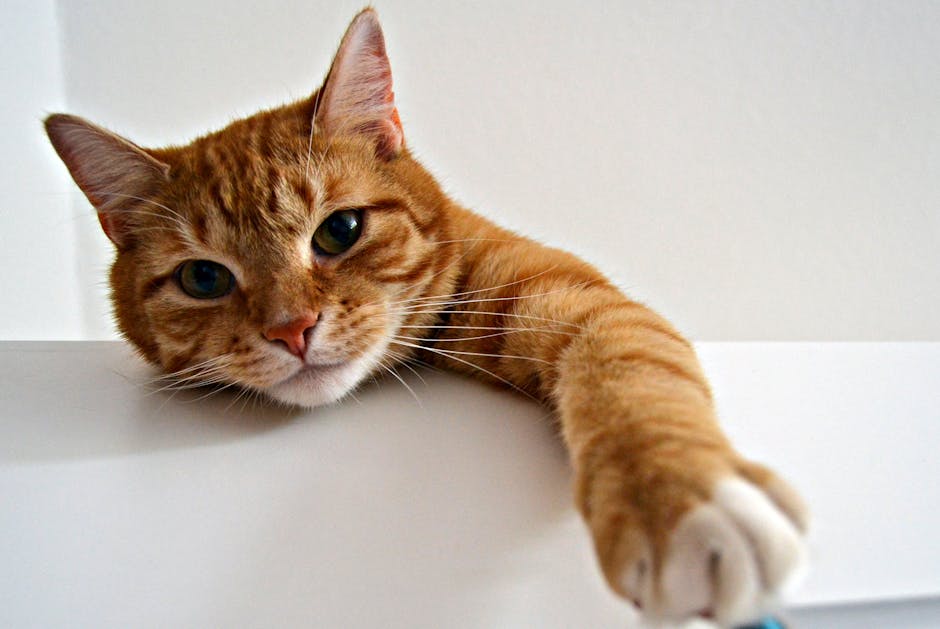
Health and Care Tips for Orange Cat Breeds
Caring for orange cat breeds involves attention to both common feline health concerns and breed‑specific needs. This section outlines practical tips that keep your orange companion healthy, happy, and looking vibrant.
Coat and Skin Care
- Regular brushing: 2‑3 times a week for short‑haired breeds; daily for long‑haired breeds like Maine Coons or Persians.
- Bathing: Not required regularly, but occasional baths help remove oil buildup in dense coats.
- Sun protection: Light‑colored fur can be more sensitive to UV; avoid prolonged exposure to direct sunlight, especially on windowsills.
Dental Health
- Brushing: Aim for a quick brush once a week using feline‑safe toothpaste.
- Dental treats: Offer dental chews or toys designed to reduce plaque.
- Vet checks: Annual dental examinations catch early tartar buildup or gum disease.
Weight Management
- Balanced diet: Feed high‑protein, grain‑free kibble or wet food appropriate for the breed’s activity level.
- Portion control: Use a measuring cup; avoid free‑feeding, especially for indoor cats prone to obesity.
- Playtime: Interactive toys and puzzle feeders stimulate movement and mental engagement.
Routine Veterinary Care
- Vaccinations: Core vaccines (FPV, FHV‑1, FCV) plus Rabies as required by local law.
- Parasite control: Monthly flea/tick preventatives; regular deworming.
- Health screening: For breeds with known predispositions (e.g., hypertrophic cardiomyopathy in Maine Coons, polycystic kidney disease in Persians), schedule specialized screenings early.
Preventative Measures
- Microchipping: Permanent ID improves chances of safe return if lost.
- Spaying/Neutering: Reduces the risk of hormone‑related cancers and helps control the orange cat population.
- Environmental enrichment: Scratching posts, climbing trees, and safe outdoor enclosures keep cats mentally sharp and physically fit.
By following these guidelines, you’ll support the overall well-being of any orange cat breed, ensuring a long, vibrant life together.
Behavioral Traits of Orange Cat Breeds
If you’ve ever noticed an orange cat’s outgoing nature, you’re not alone – many owners report that orange cat breeds tend to be social, playful, and vocal.
While individual personalities vary, several behavioral trends emerge across most orange felines.
Social Personality
- People-oriented: They often seek human interaction, following owners from room to room.
- Friendliness: Tend to be less fearful of strangers, making them good candidates for households with guests.
Playfulness
- High energy: Especially in younger cats, they enjoy feather wands, laser pointers, and interactive puzzles.
- Problem‑solving: Many orange cats love to figure out treat dispensers or cat‑door mechanisms.
Vocalizations
- Chatty nature: Soft “meows” or chirps when seeking attention are common.
- Communication: Use vocal cues to tell you when they’re hungry, bored, or want to be petted.
Affection Levels
- Lap lovers: Many enjoy curling up on laps for naps, especially Persians and Exotic Shorthairs.
- Head‑butting: A friendly “bump” with their head is a sign of trust and affection.
Understanding these traits helps you tailor daily routines—providing adequate playtime, mental stimulation, and affection—to match the energy and social needs of your orange cat breed.
Choosing the Right Orange Cat Breed for Your Home
Selecting a feline friend is a personal decision that should consider your living space, activity level, and the breed’s specific traits.
Below are steps to help you find the perfect orange cat breed for your household.
- Assess Your Lifestyle
- Active families benefit from playful breeds like Bengals or Siberians.
- Low‑key households may prefer calm Persians or British Shorthairs.
- Evaluate Space Requirements
- Large breeds (Maine Coon) thrive with room to roam; apartment dwellers might choose compact American Shorthairs.
- Research Temperament
- Read breed profiles and watch videos to gauge if the cat’s personality aligns with your expectations.
- Consider Grooming Commitment
- Long‑haired breeds need daily brushing (Persian, Maine Coon).
- Short‑haired cats are lower‑maintenance (American Shorthair, Exotic Shorthair).
- Check Health History
- Investigate breed‑specific concerns; request health clearances from breeders or ask shelter staff about known conditions.
- Visit Shelters & Reputable Breeders
- Spend time interacting with the cats. Observe their behavior, comfort with handling, and overall health.
- Make an Informed Decision
- Match the breed’s needs with your ability to provide care, space, and companionship.
Following this checklist ensures you choose an orange cat breed that will thrive in your environment and bring lasting joy.
Fun Facts About Orange Cats
Beyond their beautiful coats, orange cats have a collection of quirks and trivia that make them fascinating companions.
- Gene‑linked gender bias: About 80 % of orange cats are male because the orange gene is X‑linked.
- “Ginger” nickname: In the UK, orange cats are often called “ginger cats.”
- Famous orange cats: Garfield, Hobbes, and Morris the Cat (the 9Lives mascot) have all popularized the orange coat.
- Heat‑sensing: The lighter color reflects sunlight, keeping orange cats slightly cooler in hot climates.
- Literary love: Orange cats appear in classic literature, from “The Cat Who Went to Heaven” to “Harry Potter” (the ginger cat Crookshanks).
These tidbits add extra charm to the already engaging world of orange cat breeds.
FAQs
Are orange cat breeds always male?
No. While the majority (about 80 %) of orange cats are male due to the X‑linked orange gene, females can be orange if they inherit two copies of the orange allele (OO). Such females are rarer but do exist.
Do orange cats shed more than other colors?
Shedding depends more on coat length and genetics than color. Short‑haired orange breeds like the American Shorthair shed moderately, while long‑haired orange breeds (Maine Coon, Persian) shed more heavily, especially during seasonal changes.
Can orange cats be hypoallergenic?
No orange cat breed is truly hypoallergenic. All cats produce the protein Fel d 1 in their saliva and skin oils, which triggers allergies. However, some individuals react less to short‑haired breeds such as the Exotic Shorthair.
Which orange cat breed is best for an apartment?
The American Shorthair and Exotic Shorthair are excellent apartment choices. They have moderate activity levels, require minimal grooming, and adapt well to indoor life without needing large spaces.
How long do orange cat breeds typically live?
Lifespan varies by breed. Most orange cat breeds live between 12‑16 years with proper care. Long‑haired breeds like Persians may face health issues that can slightly shorten their average life expectancy.

Conclusion
Orange cat breeds captivate owners through their vivid coats, friendly dispositions, and diverse personalities—from the gentle giant Maine Coon to the sleek, playful Bengal.
By understanding the genetics, health requirements, and behavioral tendencies of each breed, you can confidently choose a feline companion that fits your home and lifestyle.
Remember to match grooming needs, activity levels, and space considerations when selecting a breed, and always prioritize regular veterinary care.
If you’re ready to welcome an orange cat into your life, start by researching reputable breeders or visiting local shelters, and use the insights from this guide to find the perfect orange cat breed for a happy, healthy partnership.


